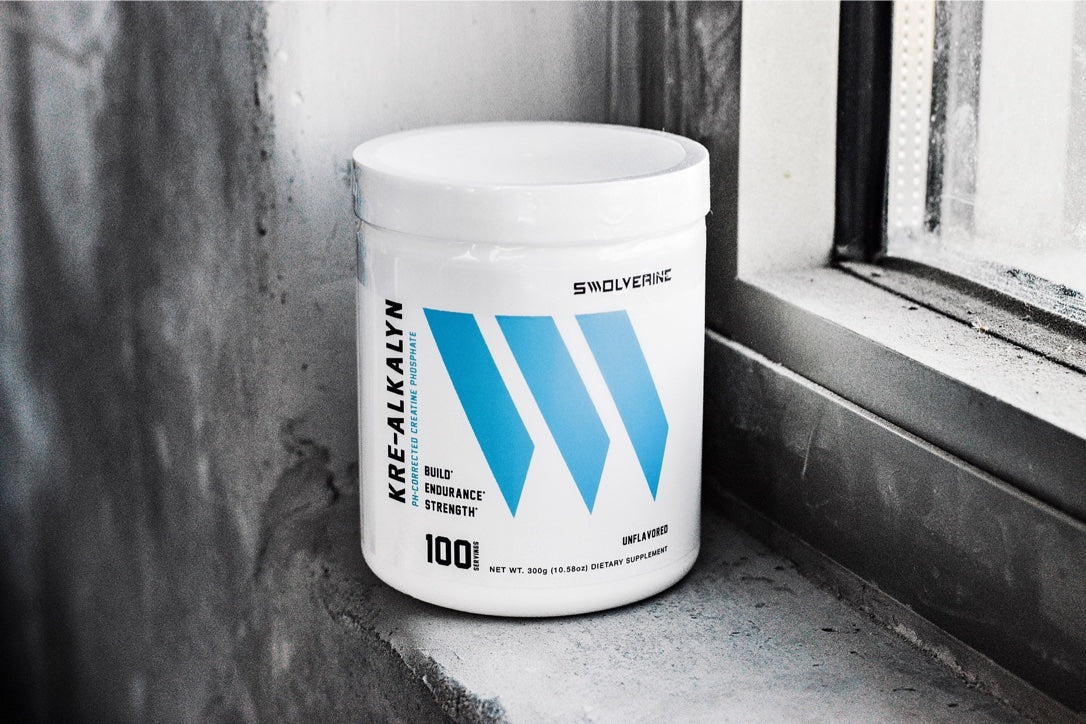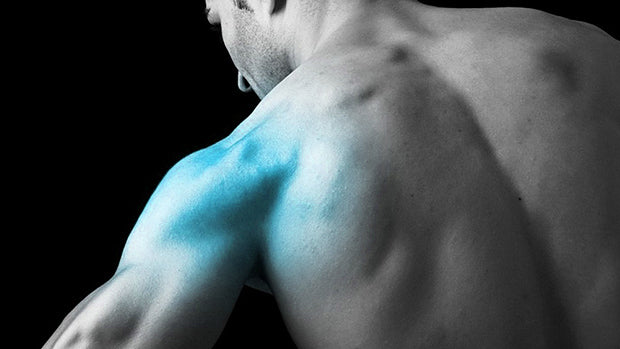If you’ve ever searched for the best type of creatine, you've likely encountered an overwhelming list of options—Creatine Monohydrate, HCL, Kre-Alkalyn, Ethyl Ester, Magnesium Chelate, Nitrate, and more. While creatine monohydrate has been the go-to for decades, supplement manufacturers have developed alternative versions claiming better absorption, performance, and digestive tolerance.
But which version actually delivers? In this guide, we’ll explore how each type of creatine works, what the research says, and whether it’s worth your time (and money).
What Is Creatine Monohydrate and Why Were Other Forms Created?
Creatine monohydrate is the original and most extensively studied form of creatine. It consists of one creatine molecule bound to a single water molecule (hence, “mono-hydrate”). When consumed, it helps increase phosphocreatine stores in your muscles, allowing you to regenerate ATP (adenosine triphosphate)—the body’s primary fuel source for high-intensity training.
For decades, creatine monohydrate has been proven to:
-
Increase muscle strength and power output
-
Improve sprint performance and explosive movements
-
Enhance muscle cell hydration, which can trigger muscle growth
-
Support recovery from training and resistance to fatigue
Over 500 peer-reviewed studies back creatine monohydrate’s efficacy and safety, making it the benchmark for evaluating all other forms of creatine (Kreider et al., 2017 – Journal of the International Society of Sports Nutrition).
So Why Were Other types of Creatine Created?
Despite its effectiveness, creatine monohydrate isn't perfect for everyone.
Some users report:
-
Gastrointestinal discomfort
-
Water retention and bloating
-
The need for a loading phase (20g/day for 5–7 days) to saturate muscle stores
-
Slightly lower solubility in water, which can affect absorption if not mixed properly
To address these issues—and to potentially improve upon monohydrate’s bioavailability—new forms of creatine were developed, including:
-
Creatine HCL – designed for improved solubility and smaller doses
-
Kre-Alkalyn – pH-buffered to prevent degradation into creatinine
-
Creatine Ethyl Ester – aimed at faster absorption via fat-soluble delivery
-
Creatine Nitrate – combines creatine with nitric oxide for added pump and vascularity
-
Creatine Magnesium Chelate – introduces a mineral for possible ATP support
-
Creatine Pyruvate – targeted for aerobic output and endurance athletes
While these newer forms claim improved absorption, digestibility, or specialized performance effects, very few have matched or outperformed creatine monohydrate in controlled clinical trials.
1. Creatine Hydrochloride (HCL)
How It Works
Creatine HCL is formed by bonding creatine with hydrochloric acid, which drastically improves water solubility. The theory is that better solubility enhances intestinal absorption and reduces the need for high dosing.
What the Research Says
Animal research found that Creatine HCL is 38 times more soluble than creatine monohydrate (Jagim et al., 2012). However, human trials are lacking, and its claimed superior bioavailability remains unproven in clinical settings.
Best Type of Creatine for:
-
People with sensitive stomachs
-
Those who experience GI discomfort from monohydrate
Summary
More human trials are needed to confirm if HCL is truly the best type of creatine for absorption and effectiveness.
2. Kre-Alkalyn (pH-Corrected Creatine)
How It Works
Kre-Alkalyn is creatine monohydrate buffered with alkaline compounds (e.g., bicarbonate, soda ash) to raise the pH to between 7 and 14. This higher pH is said to prevent conversion into creatinine, which is responsible for water retention and bloating.
What the Research Says
Real-time stability testing showed Kre-Alkalyn retains nearly 100% of its structure after 6 years, with virtually no creatinine formation (Stout et al., 2007). Multiple studies also report improvements in VO2 max, endurance, and aerobic performance over monohydrate (Jagim et al., 2012).
Best Type of Creatine for:
-
Athletes doing CrossFit, HIIT, or endurance sports
-
People sensitive to bloating or cramping
Summary
A strong contender for the best type of creatine if you want endurance, less water retention, and no loading phase.
3. Creatine Ethyl Ester (CEE)
How It Works
CEE is creatine bonded with ethanol ester salts, aiming to improve lipid solubility and cell membrane permeability.
What the Research Says
A major study comparing CEE to creatine monohydrate found CEE underperformed in both strength and muscle creatine uptake, largely due to rapid breakdown in the stomach (Spillane et al., 2009).
Best Type of Creatine for:
-
Not recommended—monohydrate outperforms CEE in all categories.
Summary
CEE is not the best type of creatine—research shows it is less effective and poorly absorbed.
4. Creatine Magnesium Chelate
How It Works
This form attaches magnesium to creatine, theorizing improved ATP synthesis and reduced gastrointestinal stress.
What the Research Says
In a 10-day double-blind study, creatine magnesium chelate and monohydrate had similar effects on strength gains (Brilla & Conte, 2000). No advantage in muscle performance or absorption was noted.
Best Type of Creatine for:
-
Individuals who already use magnesium for cramp prevention
-
Athletes looking for mineral support with creatine
Summary
May support performance, but current evidence doesn’t support it as the best type of creatine over monohydrate.
5. Creatine Pyruvate
How It Works
Combines creatine with pyruvic acid, intended to increase aerobic metabolism and muscle endurance.
What the Research Says
A 5-week study found no improvement in power output compared to creatine monohydrate (Jäger et al., 2007). Another study in cyclists found no benefit to endurance capacity (Van Loon et al., 2003).
Best Type of Creatine for:
-
Theoretically for endurance—but not supported in research
Summary
Creatine pyruvate has no proven advantage, and is not the best type of creatine for any performance metric.
6. Creatine Nitrate
How It Works
Creatine Nitrate is bonded with nitrate, which may enhance blood flow via nitric oxide pathways and improve muscle pump.
What the Research Says
In two 7-day crossover studies, creatine nitrate performed equally to monohydrate in terms of strength, endurance, and solubility (Volek et al., 2011).
Best Type of Creatine for:
-
Lifters seeking a bigger pump
-
Athletes already using nitrate-based pre-workouts
Summary
While it's just as effective as monohydrate, it's not superior in key performance areas.
Creatine Monohydrate: Still the Gold Standard
It’s worth noting that creatine monohydrate has the most clinical support—over 500 peer-reviewed studies confirm its ability to increase:
-
Lean muscle mass
-
Strength and power output
-
ATP regeneration
-
Exercise recovery
It’s cost-effective, well-researched, and easily accessible. While other forms may help specific subgroups (those with GI sensitivity or endurance athletes), creatine monohydrate remains the foundation by which all others are judged.
Final Verdict: What Is the Best Type of Creatine?
Here’s a side-by-side summary:
| Creatine Type | Best For | Performance | Absorption | Side Effects | Loading Required |
|---|---|---|---|---|---|
| Monohydrate | Muscle growth & strength | ✅ ✅ ✅ | ✅ ✅ | Moderate | ✅ |
| HCL | GI-sensitive users | ✅ ✅ | ✅ ✅ ✅ | Minimal | ❌ |
| Kre-Alkalyn | Endurance / high-intensity sports | ✅ ✅ ✅ | ✅ ✅ ✅ | Minimal | ❌ |
| Ethyl Ester | None (underperformer) | ❌ | ❌ | Moderate | ❌ |
| Magnesium Chelate | Creatine + mineral support | ✅ ✅ | ? | Moderate | ✅ |
| Pyruvate | Not validated | ❌ | ❌ | Moderate | ✅ |
| Nitrate | Pump and blood flow | ✅ ✅ | ✅ | Moderate | ❌ |
Creatine Dosage, Timing, Safety, and Side Effects
Once you’ve identified the best type of creatine for your goals, understanding the right way to take it is critical. Proper dosing and timing can significantly influence its effectiveness and reduce the likelihood of side effects.
How Much Creatine Should You Take?
Standard Dose (Maintenance)
The standard, research-backed dose for creatine monohydrate is:
-
3 to 5 grams per day
This is enough to maintain muscle saturation after either a loading phase or steady use over several weeks.
Optional Loading Phase
-
20 grams per day, split into four 5-gram servings, for 5 to 7 days
-
This accelerates muscle saturation and helps users experience the benefits faster
Although effective, loading can cause water retention or stomach discomfort in some individuals. It is not required for results—steady daily use can also saturate creatine stores over time.
Dosage for Other Forms
-
Creatine HCL: Typically effective at 1.5 to 2 grams per day due to greater solubility
-
Kre-Alkalyn: 1.5 to 3 grams per day with no loading required
-
Creatine Nitrate, Ethyl Ester, and Pyruvate: Follow label instructions, as effective doses vary
Reference: Buford et al., 2007 – Journal of the International Society of Sports Nutrition
When Should You Take Creatine?
Post-Workout Timing
Many studies suggest that post-workout creatine intake leads to improved muscle uptake and greater strength gains, especially when combined with carbohydrates or protein to enhance insulin response.
Pre-Workout Timing
While less supported than post-workout timing, pre-workout dosing may offer cognitive and muscular benefits, particularly with fast-absorbing forms like Kre-Alkalyn or HCL.
Consistency Is More Important Than Timing
What matters most is daily consistency. Creatine works by saturating muscle cells—not by acute timing—so missing days reduces long-term benefits.
Reference: Candow et al., 2014 – Applied Physiology, Nutrition, and Metabolism
Safety and Side Effects of Creatine
Creatine is one of the most rigorously studied supplements in sports science and is considered safe and well-tolerated in healthy individuals when used at recommended doses.
Proven Safety
Creatine has been shown to:
-
Support performance and recovery
-
Improve brain function and cognition in some populations
-
Cause no damage to kidneys or liver in healthy users, even over long-term use
Reference: Poortmans & Francaux, 1999 – Medicine and Science in Sports and Exercise
Potential Side Effects
| Side Effect | Cause | How to Manage |
|---|---|---|
| Bloating / Water Retention | Increased intracellular water in muscles | Use smaller doses or choose Kre-Alkalyn / HCL |
| Stomach Discomfort | Poor mixing or high-dose intake | Take with food or split doses throughout day |
| Muscle Cramping | Rare; typically due to dehydration | Increase fluid intake |
| Temporary Weight Gain | Due to water retention, not fat | Expected with creatine saturation |
These effects are usually mild and often fade with consistent use or by switching to a buffered or more soluble form like Creatine HCL or Kre-Alkalyn.
Who Should Use Caution?
While creatine is safe for most individuals, consult a physician before use if you:
-
Have pre-existing kidney conditions
-
Are taking nephrotoxic medications
-
Are pregnant or breastfeeding
-
Are under 18 years old, unless under professional supervision
Summary: Creatine Dosing and Timing Recommendations
| Goal | Recommended Dose | Timing | Loading Required |
|---|---|---|---|
| Strength and muscle growth | 5 grams per day | Post-workout | Optional |
| Endurance or CrossFit | 3 grams per day (Kre-Alkalyn) | Pre or post-workout | No |
| Sensitive stomach / digestion | 2 grams per day (HCL) | Anytime | No |
Let me know if you want this section adapted into a printable quick-start guide, educational handout, or eCommerce support FAQ for your product listings.
Conclusion: Choose Based on Your Goals
If you're searching for the best type of creatine for muscle strength, creatine monohydrate is still king. But if you're looking to avoid bloating, Kre-Alkalyn or HCL may be better suited for your goals.
Ultimately, your training style, tolerance, and goals should determine which form of creatine is right for you.
Looking for a high-quality creatine? Try Swolverine's Kre-Alkalyn—clinically dosed, clean, and third-party tested.






